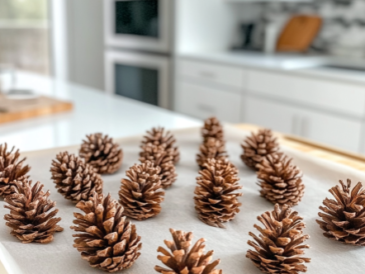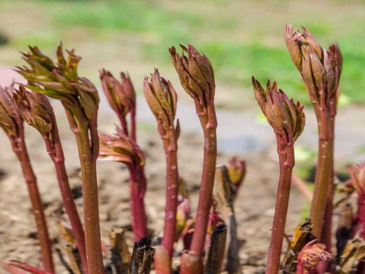Plants are living organisms that communicate their needs and discomforts through visible signs, especially on their leaves. Being able to interpret these signals allows plant enthusiasts to identify problems early and adjust care practices to promote healthy growth. This guide will walk you through some of the most common leaf issues and their causes, along with actionable solutions to nurse your plants back to optimal health.
1. Yellow Leaves
Yellowing leaves are one of the most frequently observed plant issues and can be triggered by various factors, from watering habits to environmental stress.
Possible Causes:
- Overwatering: This is one of the most common culprits. Too much water can drown the roots, depriving them of oxygen and leading to yellow leaves.
- Nutrient Deficiency: If your plant lacks essential nutrients like nitrogen, magnesium, or iron, it will display yellowing leaves.
- Inadequate Light: Plants that aren’t receiving enough light may develop yellow leaves as they struggle to photosynthesize effectively.
What to Do:
- Check Watering Schedule: Ensure you’re not overwatering your plant. Let the soil dry out between watering sessions, especially if the plant doesn’t require constant moisture.
- Adjust Lighting Conditions: If your plant is in a low-light area, move it closer to a natural light source or use grow lights to supplement its lighting needs.
- Fertilize: If the issue stems from nutrient deficiency, a balanced fertilizer can help replenish missing nutrients. Consider slow-release fertilizers for long-term health.
2. Brown Tips on Leaves
Brown tips on plant leaves can be unsightly and signal underlying issues related to hydration, soil conditions, or environmental factors.
Possible Causes:
- Low Humidity: Many indoor plants, especially tropical varieties, require high humidity to thrive. Dry air can lead to browning tips.
- Excess Fertilizer: Overfertilizing can cause a buildup of salts in the soil, which draws water away from plant roots, leading to browning.
- Inconsistent Watering: Irregular watering, whether too much or too little, can cause stress, resulting in browning tips.
What to Do:
- Increase Humidity: Use a humidifier or place a tray of water near the plant to boost humidity levels. Grouping plants together can also help increase local humidity.
- Flush the Soil: If you suspect excess salts from fertilizers, flush the soil with water to remove buildup. Going forward, use fertilizers at the recommended rate.
- Water Consistently: Set a regular watering schedule based on your plant’s needs, ensuring that the soil remains evenly moist but not waterlogged.
3. Wilting Leaves
Wilting is a telltale sign that your plant is struggling, often related to issues with water uptake or root health.
Possible Causes:
- Underwatering: If the soil is too dry, the plant will struggle to maintain turgidity, leading to wilting leaves.
- Root Rot: Overwatering or poor drainage can cause the roots to rot, reducing the plant’s ability to absorb water.
- Pest Infestation: Certain pests can damage plant roots or stems, hindering the flow of nutrients and water.
What to Do:
- Water Appropriately: Check the soil’s moisture level. If it’s dry, give the plant a good drink and establish a better watering routine.
- Inspect the Roots: If you suspect root rot, gently remove the plant from its pot to inspect the roots. Trim any mushy, darkened roots and replant in fresh, well-draining soil.
- Pest Control: Examine the plant for signs of pests such as aphids or spider mites, and treat with insecticidal soap or neem oil if necessary.
4. Leaf Drop
Leaf drop occurs when a plant sheds its leaves, often signaling stress due to environmental changes or pests.
Possible Causes:
- Temperature Fluctuations: Plants can be sensitive to sudden temperature changes, leading to leaf drop.
- Environmental Stress: Moving plants to new locations or drastic changes in lighting conditions can cause them to shed leaves as they adapt.
- Pests: Infestations from insects like scale or mealybugs can also cause plants to drop their leaves prematurely.
What to Do:
- Stabilize the Environment: Keep your plant in a consistent environment, avoiding exposure to drafts, heat sources, or air conditioners.
- Allow Time for Adjustment: If you’ve recently moved the plant or changed its conditions, give it some time to acclimate before making further adjustments.
- Check for Pests: Inspect the leaves, stems, and soil for any signs of pests. If found, treat the plant with appropriate pest control measures.
5. Pale or Discolored Leaves
When leaves become pale, washed out, or show unusual coloration, it often indicates a problem with the plant’s nutrient intake or environmental conditions.
Possible Causes:
- Nutrient Deficiencies: Lack of nutrients like nitrogen, phosphorus, or potassium can cause pale or yellowing leaves.
- Improper pH Levels: If the soil’s pH is too high or too low, the plant may struggle to absorb nutrients effectively, leading to discoloration.
- Inadequate Light: Plants that don’t get enough light may become pale as they’re unable to produce sufficient chlorophyll.
What to Do:
- Test Soil pH: Use a pH testing kit to check the soil’s pH levels and amend it if necessary to suit your plant’s needs.
- Fertilize with Care: Use a plant-specific fertilizer to address nutrient imbalances, ensuring the plant gets the proper macronutrients.
- Increase Light: Move the plant to a location with brighter light or supplement with artificial grow lights if it’s not getting enough natural sunlight.
By paying close attention to the signs your plant’s leaves are displaying, you can catch potential problems early and take corrective measures before they escalate. This understanding of plant leaf health can not only save your plants from damage but also help you become a more knowledgeable and confident plant caretaker.
Each plant is unique, and learning its specific needs will allow you to fine-tune your care approach, ensuring that your plant collection remains vibrant, healthy, and flourishing year-round.




